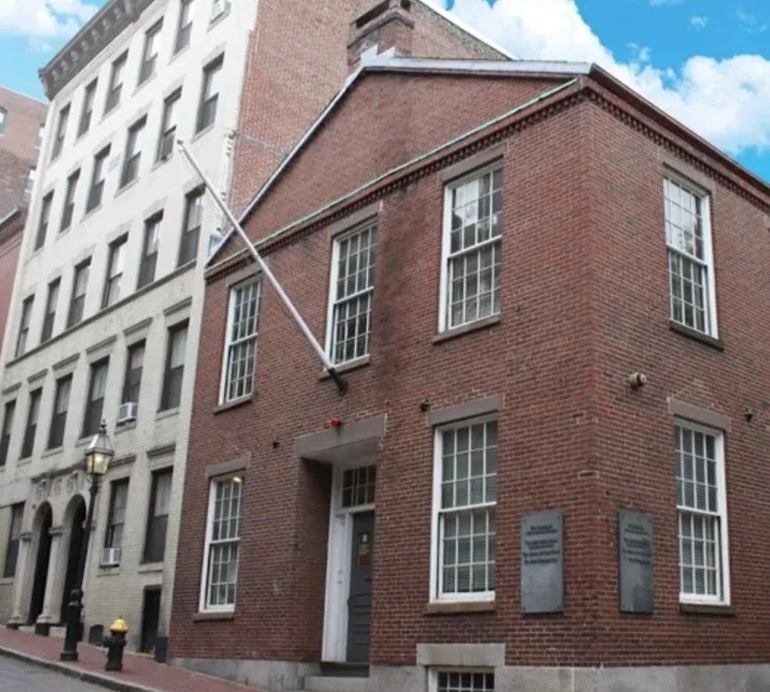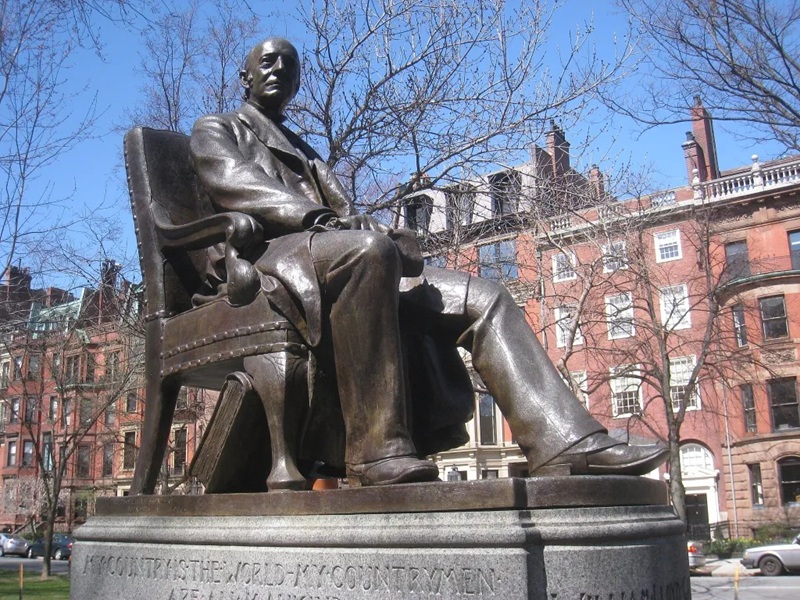As we mark Juneteenth, don’t let Trump’s cuts to vital cultural institutions whitewash history
As a descendant of abolitionist William Lloyd Garrison, I consider the Museum of African American History a sacred space

The African American History Museum on Beacon Hill. (Courtesy of Museum of African American History)
I GREW UP under the unflinching eyes of my great-great-great-grandfather, William Lloyd Garrison, a fierce abolitionist who reshaped America’s moral conscience on slavery.
A portrait of him held a place of pride in my grandfather’s house in Lincoln, and my parents took every opportunity to point out the Olin Levi Warner statue on the Commonwealth Avenue Mall in Boston that honors his life of service. Juneteenth, marking the end of slavery in the United States, is a fitting moment to reflect on what his story means in my life.
I am proud of my family’s legacy, and I am proud to be a lifelong resident of Massachusetts, a state that has been a vanguard of liberty and justice since the birth of our great nation. I believe we have a responsibility to nurture a rich connection with our past as we work to create a better future. That’s why I was outraged to learn that in April the federal government began terminating Institute of Museum and Library Services (IMLS) grants, an essential source of funding for arts and educational institutions that preserve and elevate that historical connection.

Statue of abolitionist William Lloyd Garrison on the Commonwealth Avenue Mall in Boston. (Photo via Creative Commons/Wikipedia by Daderot)
In light of this shortsighted and destructive choice, we the people must step up. Our nonprofit institutions need us, just as we need them
My support starts with the Museum of African American History | Boston & Nantucket, which has had $500,000 in IMLS funding, originally awarded last June, rescinded. This is a major loss for an institution with an annual operating budget of $3 million. The termination of this grant forced the museum to reallocate resources towards fundraising efforts and reimagine the development of programming offered at the museum’s landmark sites.
I first discovered this cultural treasure when I, along with hundreds of other descendants of William Lloyd Garrison, convened in 2005 to celebrate the 200th anniversary of his birth. We visited the museum, toured Garrison’s house in Roxbury, and traced his footsteps through the many famous corners of the city he called home during his fight against injustice.
All through my childhood, I had gathered tidbits about Garrison from family members, but my first deep look at his life came in middle school when I read All on Fire: William Lloyd Garrison and the Abolition of Slavery by Henry Mayer, a book my mother shared with me. I was engrossed, learning how Garrison was famed for his unwavering demand that slavery be abolished immediately and unconditionally.
This view, radical at the time, was unwelcome among the rich and powerful who wanted at most slow, gradual emancipation. Garrison himself favored gradual emancipation at first until he attended a life-changing meeting at the African Meeting House on Joy Street in Boston’s Beacon Hill neighborhood, now one of four sites under the museum’s care. At this gathering, he listened and understood that emancipation cannot wait until it is convenient for those in power. That urgent message became his clarion call.
Garrison, a white abolitionist, stood strong in the face of threats and criticism. In 1831 in Boston he founded The Liberator newspaper, recognized for its uncompromising stance of immediate abolition. A year later, he launched the New England Anti-Slavery Society from that very same Meeting House.
At age 30, Garrison’s fiery appeals for justice nearly cost him his life when a lynch mob of so-called “gentlemen” chased him to his office in what is now Government Center. Thankfully, the sheriff placed him in protective custody until the crowd dispersed. Despite threats like these, he never retreated a single inch from his principles.
In 1865, the United States abolished slavery, but the scars and fault lines of racism remain. When American white nationalists tried to host a rally on Boston Common in 2017, I joined tens of thousands of others in a boisterous counterdemonstration.
Today, rich and powerful people again want to silence voices they dislike and attenuate our connection to the lessons of history. My family and I strengthen that connection through support of the Museum of African American History I Boston & Nantucket.

The African Meeting House, built in 1806 by free African American artisans as a sacred space and part of the museum complex on Beacon Hill, is sacred for us too. We are humbly grateful to the museum for its work to uplift the stories of agitators and advocates like William Lloyd Garrison, Frederick Douglass, Wendell Phillips, and Sarah Grimke. We show our support as members and with donations of time and family artifacts.
Since news of the IMLS grant termination became public, elected officials have spoken out, and citizens of every age and background have become members and made donations. Still, this moment calls for more.
We live in a time when institutions with the honesty and integrity to tell difficult historical truths are bullied by those who seek to whitewash our past. I urge residents of our Commonwealth to join the Garrison family in supporting this museum — and all cultural institutions that face these challenges — and to take courage from the stories these institutions help illuminate.
Garth Griffin has served on the board of directors of the Museum of African American History | Boston & Nantucket since 2020. He is the co-founder and chief technology officer of the tech startup Gigasheet.
Commonwealth News Service
